 |
 |
|
|
|
The territory of today's Turkey has been inhabited, ruled or traversed by numerous peoples and empires who have left behind fortresses and rulers' seats. The oldest known city fortification is the citadel in the second layer of Troy from the first half of the third millennium BC, the builders of which are unknown. After that, buildings were possibly built by the Hurrians, certainly the Luwier and Hittites, mostly walled city centres, which contained the residences of the rulers as well as serving as a refuge for the population in case of danger. The subsequent acropolises of the Phrygians, Lyders, Urartians, Greeks and Romans served similar purposes. |
|
|
Further castles in preparation |
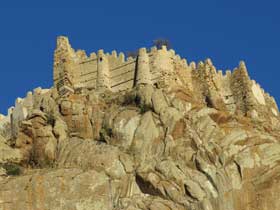 |
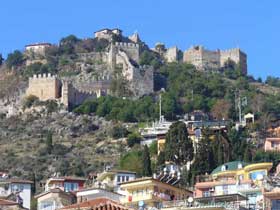 |
 |
 |
||||
|
Afyonkarahisar |
Alanya (Korakesion) |
Alarakale |
Amasya |
||||
|
Fortification built around 1350 BC by the Hittites. |
The fortress was built in the 3rd century B.C. and later expanded. |
Byzantine castle high above the river Ulugüney Çayı. |
The fortress was built on the foundations of a small Hittite fortification. |
||||
| more: | more: | ||||||
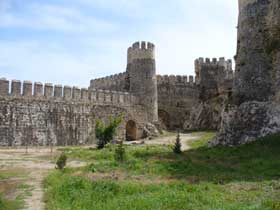 |
 |
 |
 |
||||
| Anamur | Ankara | Antiochia ad Cragum | Bayburt | ||||
| Medieval castle Mamure Kalesi on the remains of a Roman fortress | The citadel of Ankara was already built by the Hittites as a military garrison. | Built by the Romans, developed by the Byzantines and the Kleinarmenians. | Ottoman fortress on Urartian and Seljuk predecessor building. | ||||
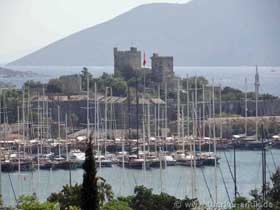 |
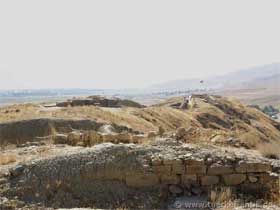 |
 |
 |
||||
| Bodrum | Çavuştepe | Çorum | Fethiye | ||||
| Almost completely preserved medieval crusader castle. | The remains of the Urartian fortress ardurihinili. | Originally Seljuk building of the Sultan Kılıç Arslan. | Crusader castle of the Order of St John from the 15th century. | ||||
| more: | more: | more: | |||||
 |
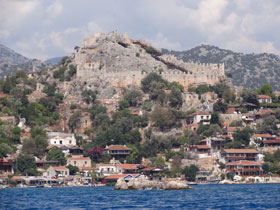 |
 |
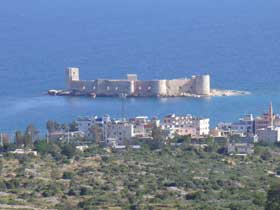 |
||||
| Hoşap | Kaleköy (Simena) | Kaunos | Kiz Kalesi | ||||
| Kurdish castle built in 1643 on the remains of a Urartian fortification. | Medieval crusader castle of the Order of St John of Rhodes. | Not a castle in the classical sense, but a fortified retreat for the city's inhabitants. | Smallmenmen fortress. Built in the 12th/13th century and later extended. | ||||
| more: | more: | more: | more: | ||||
 |
 |
 |
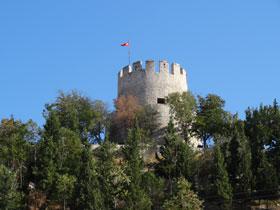 |
||||
| Korykos Kalesi | Kuşadası | Marmaris | Mut | ||||
| Late Byzantine castle complex built on Roman foundations. | Ottoman castle complex based on an old Byzantine fortification. | Ottoman castle complex based on a Hellenistic fortification. | Castle of the Caramanids based on an old Byzantine fortification. | ||||
| more: | more: | more: | more: | ||||
 |
 |
 |
 |
||||
| Selçuk | Selinus (Gazipaşa) | Silifke | Softa (Bozyazı) | ||||
| Originally Byzantine fortress built by the Seljuks. | Small Armenian fortress from the 12th century. | Byzantine castle complex in place of the ancient Acropolis. Later crusaders and others. | IA fortified refuge in Byzantine times, extended by the kingdom of Small Armenians. | ||||
| more: | more: | more: | more: | ||||
 |
|
 |
 |
||||
| Tlos | Tokmar | Trabzon | Van | ||||
| Winter residence of the Ottoman governor Kanlı Ali Ağa, called "Bloody Ali". | BCastle of Armenian origin. Probably identical with Norpert Castle. | Fortified Roman acropolis from the end of the 1st or 2nd century AD. | Urartian castle complex from the reign of King Sarduri I (834 to 825 B.C.) | ||||
| more: | more: | more: | more: | ||||
|
Further castles in preparation |
|||||||
